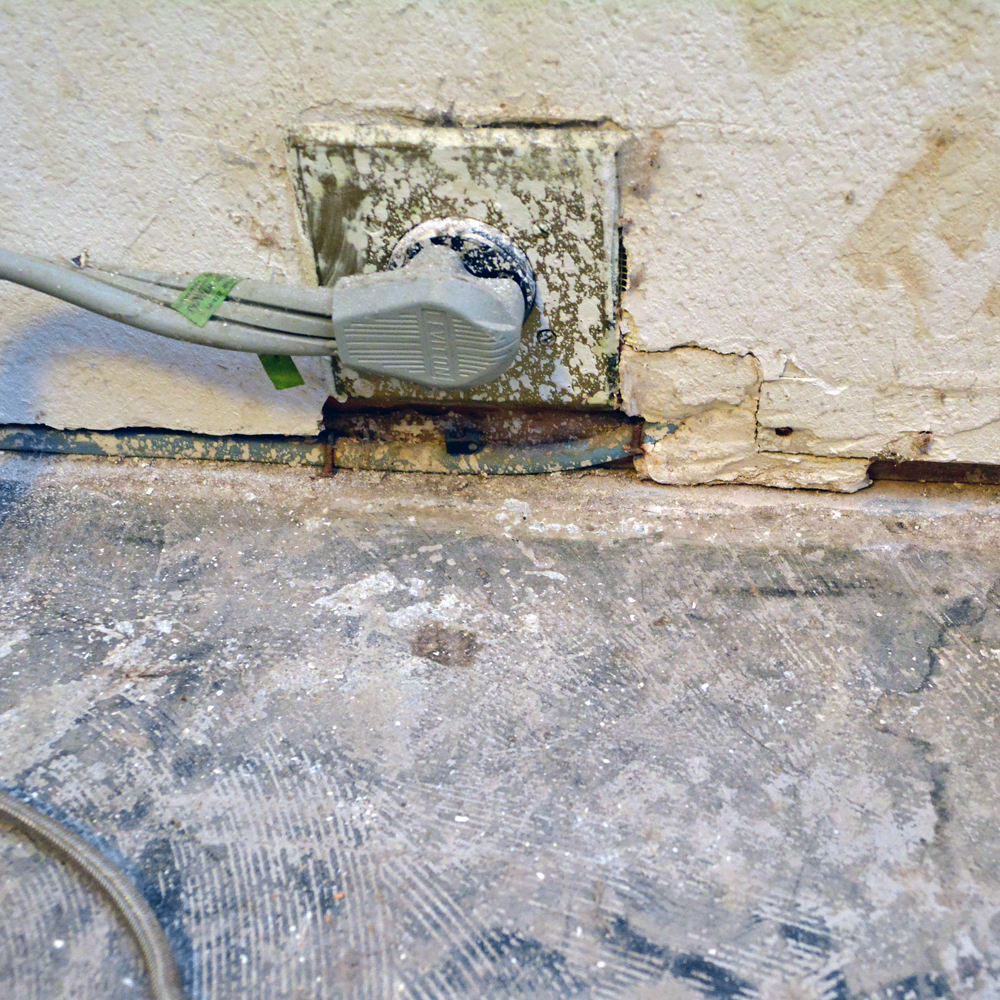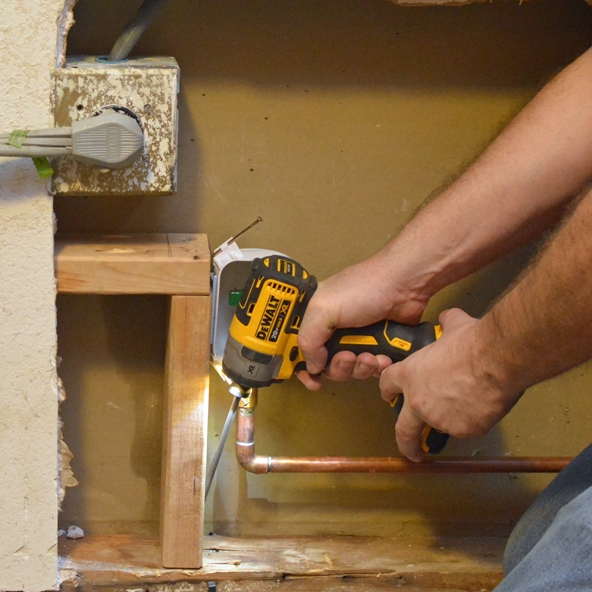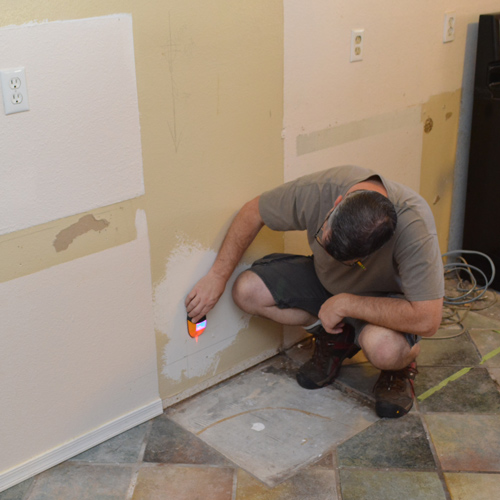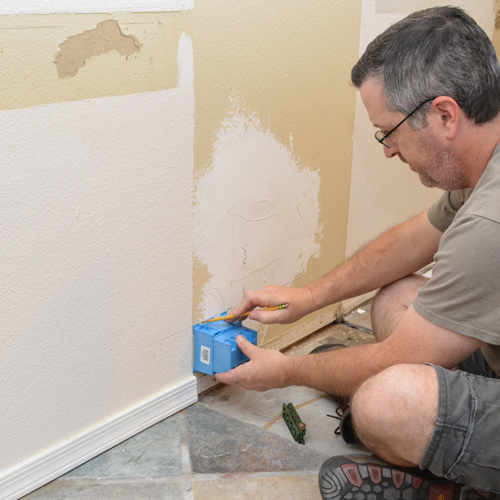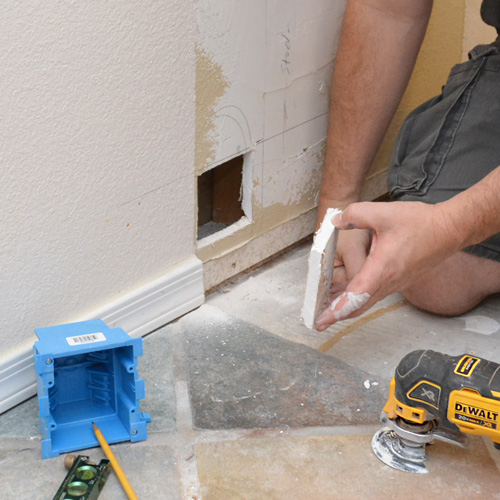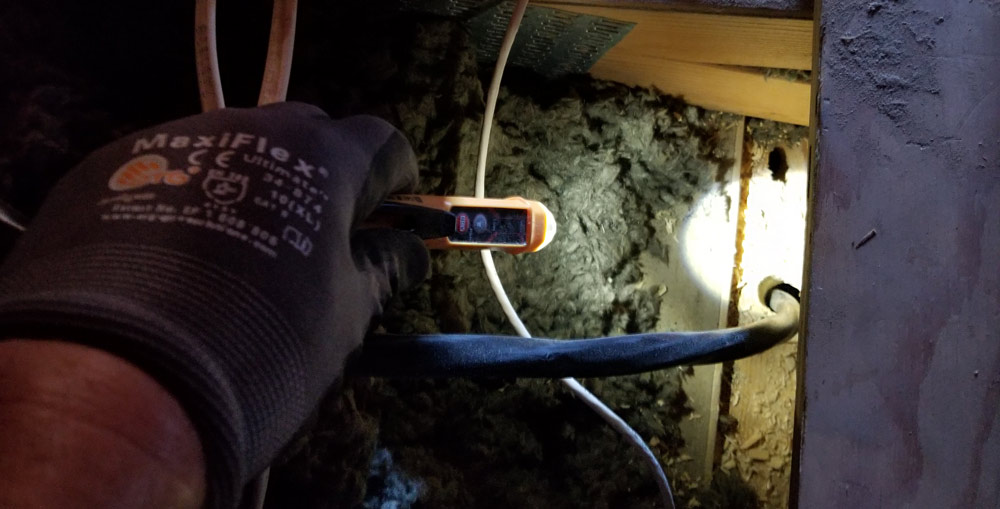Before I can start installing new kitchen cabinets on the south wall, I have to get the appliance placement worked out. Even in the middle of demolition and remodel, we're still cooking on the old stove, roughly in its original location, tippy and unlevel. The new kitchen design calls for a move. I got this.
This is an electrifying post folks. Seriously shocking stuff! In fact, you'd best head over to the AZ DIY Guy Scary Electrical Warning before reading on.
"... don't take my word for this stuff, I might be some random idiot on the internet."
- AZ DIY Guy
Of course an electric stove needs electricity right? You may have noticed that I moved the old receptacle up and out of the way for the new refrigerator water line a few posts back.
The current location is about four feet closer to the electrical panel than the new one is. I can't exactly stretch the wiring. You'd think I could splice a section of wire from the original junction box to the new location right?
Nope. Not cool. We've got to completely replace the circuit feeding the new location for several reasons:
The Receptacle - The current location has an old-school three-prong receptacle from 1979. It's ok to keep it if I'm not moving it, but since I'm doing a relocation, I need to bring it up to modern code and use a 4 prong plug and receptacle.
Not Enough Wires - The electrical cable only has three wires, two "hots" (ungrounded conductors) and a ground (grounding conductor). A 4 prong setup needs an additional wire, the neutral (grounded conductor).
Wrong kind of Wire - Even if I decided to cheat using a three-prong, and extend a bit of cable from the box, the original wiring is aluminum. It would technically be ok (but I don't want it in my house if I can help it). The problem is this wiring is too small for the amperage by today's standards. It's #6 AWG which is great for copper wiring, but too small for aluminum. Aluminum should be one size larger, #4 AWG. I don't relish my house burning down, so I'm swapping it out.
So it's a complete new, replacement circuit.
The New Stove Power Location
With the dimensioned plan from Inspired Kitchen Design tacked to the wall, I located the center of the new stove location.
(click to zoom)
I looked up the install instructions for the stove to find the usable window for the outlet placement. It had to be within 7 1/2 inches of the floor and 2 1/2 inches away from the stove edges.
I decided to install a plastic cut-in box, an "old work box", designed to be clipped into the drywall face. I moved the location slightly off center to avoid the framing I could see with my stud sensor. Nice and easy, I sliced the wall open with the oscillating multi tool.
I love using power tools.
I'd leave it like that, a nice two-gang sized hole in the wall. It would be easier to fish the new cable through the wall without the box installed.
The New Electric Cable
I picked up 50 feet of new cable and chucked it in the back of the truck.
Pro tip - Don't leave copper wire in the back of an open vehicle unattended; legions of scumbag, jackasses are more than willing to steal it from you. They won't hesitate to strip the insulation off sell it to the scrap yard. Bastards.
6-3 NM-B WG Stranded CU Electrical Cable
This is 6-3 NM-B WG Stranded CU. I'll break down the code...
6 = Number 6 wire gauge (#6 AWG), specifically American Wire Gauge. Generally, the smaller the number, the bigger the wire. For general lighting an convenience circuits, we usually use #12 for 20 amp circuits and smaller #14 for 15 amp circuits. A stove needs a lot more power, this wire can handle up to 55 amps.
3 = The number of current carrying conductors. It's basically two "hot" wires and a neutral. These are expected to be under regular electrical load.
NM-B = It's outer jacket is non-metallic. This type is commonly referred to by Southwire's brand name of Romex®, but other manufacturers make the same stuff. It's for indoor, residential use only.
WG = With Ground. It's got that extra little dose of safety, just in case. A bare copper ground wire is included, the 4th wire for the new 3 prong plug. It's only to send electricity back to the grounding bar in the panel in the event of a failure. This one is a single solid wire, it looks to be a #12.
Stranded = Wire is either stranded or solid. Stranded wire is made up of a bunch of little "strands" slightly twisted and bundled together in the insulation, rather than a single meaty piece. Stranded is easier to pull and maneuver, especially with larger sizes, but it's a little trickier to make the end terminations, because the stands can get a little frizzy at the smaller sizes.
CU = Copper. Copper can carry more amps than the other option, Aluminum. I'd have to use larger #4 aluminum, which would be a lot cheaper, but I don't like it. I'm not going to get into the old copper vs. aluminum debate, but I'm personally not a fan of aluminum wiring. We only have it in some of the larger circuits in our house, like this stove, the water heater, and feeding the pool, sub panel. I'll swap it out when I can.
Up in the Attic
You know, I could have done this anytime in the past few months.
In fact, I'd planned to do it in February. Now it's freaking, hellaciously hot. (aka "normal summertime in Phoenix"). It's a sweat dripping on my glasses, mind-numbing horrorscape of itchy insulation in the attic. I don't stay up there long. At least I was close to my new access hatch, and didn't have to belly crawl all the way from the garage.
Sifting through the horrible, mystery insulation, I was able to find the top plate 2x4. I measured from the gable wall and found my target.
Measure twice,...drill twice.
There was a bit of framing above my location, but I was able to wiggle the drill in there with a stubby spade bit and do the deed. I burrowed a 3/4" hole into the wall cavity.
I'd dragged the end of the cable in with me so I could do everything in one trip. I slipped it in the hole and started feeding it down the wall. It was a win - nothing blocked it, all the way down. There was no backing framing or fireblocking in the way.
The cool thing about being a DIY blogger documenting a project in the attic with a cell phone camera (No DSLR up in that crap!), is that I had a cell phone,... for actually calling people! I dialed my son and had him reach in the hole below and pull the cable out, while I wiggled it from above.
He pulled a good foot of it out of the hole for me. More than enough to wire the plug later.
It's been a long enough post already. I'll break here. Next time, I have to figure out how to get the cable down into the panel. It's not going to fit into any of the existing conduits. I'm also going to have to add more circuits for the kitchen. I need a bigger solution.
I'm out of the attic for now.
If you'd like to check out a list of some of the tools and materials used on this one, check out the list below. Affiliate links allow me a modest commission to run the site, at no cost you you. Thanks!
If you'd like to catch up, the rest of the kitchen remodel story (so far) is here: Kitchen Remodel.
UPDATE!
Part 2 of this exciting, life-altering post is live! Check out how I get that meaty cable down into the panel and the new 4 prong receptacle installed. Lots more work.




